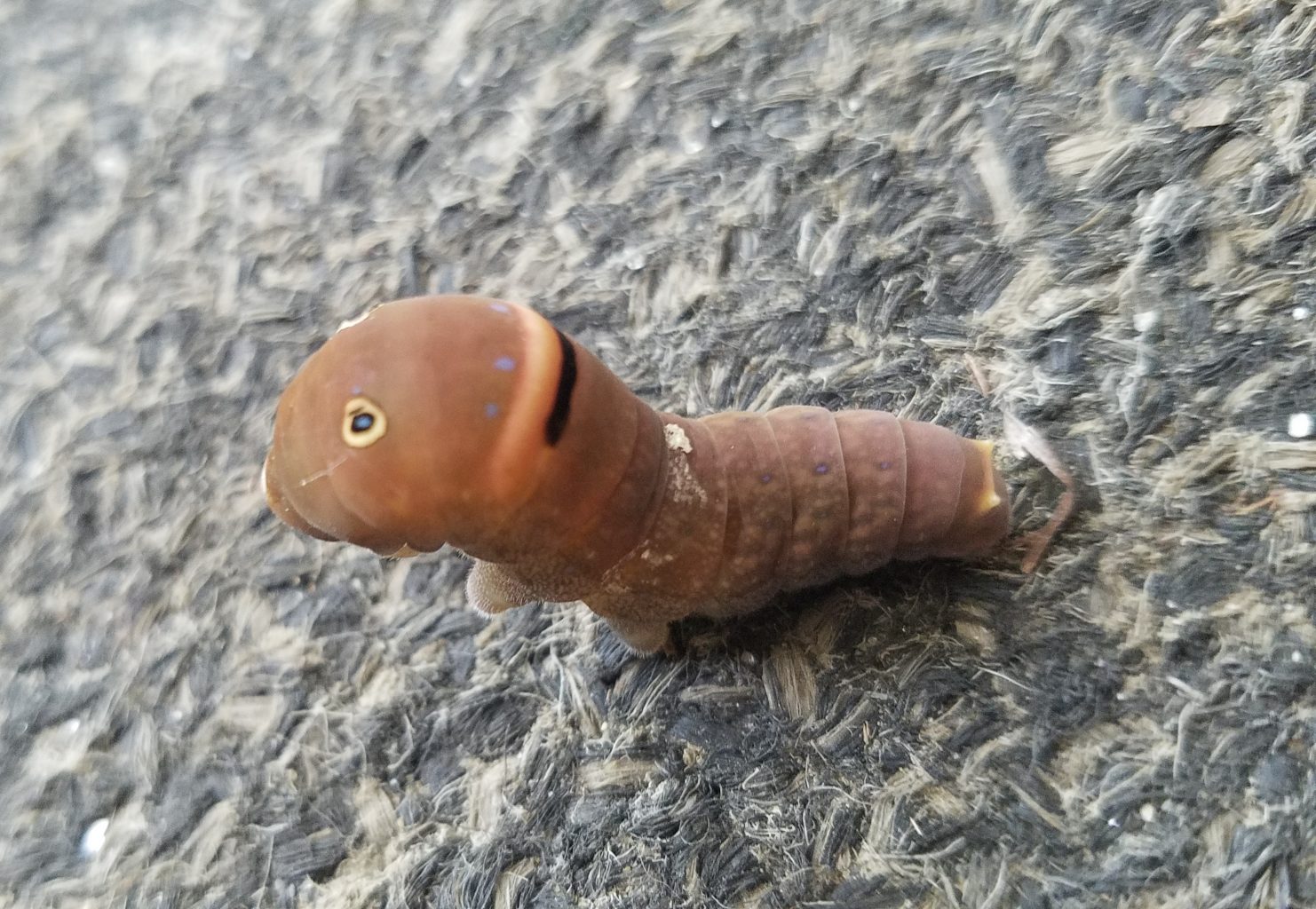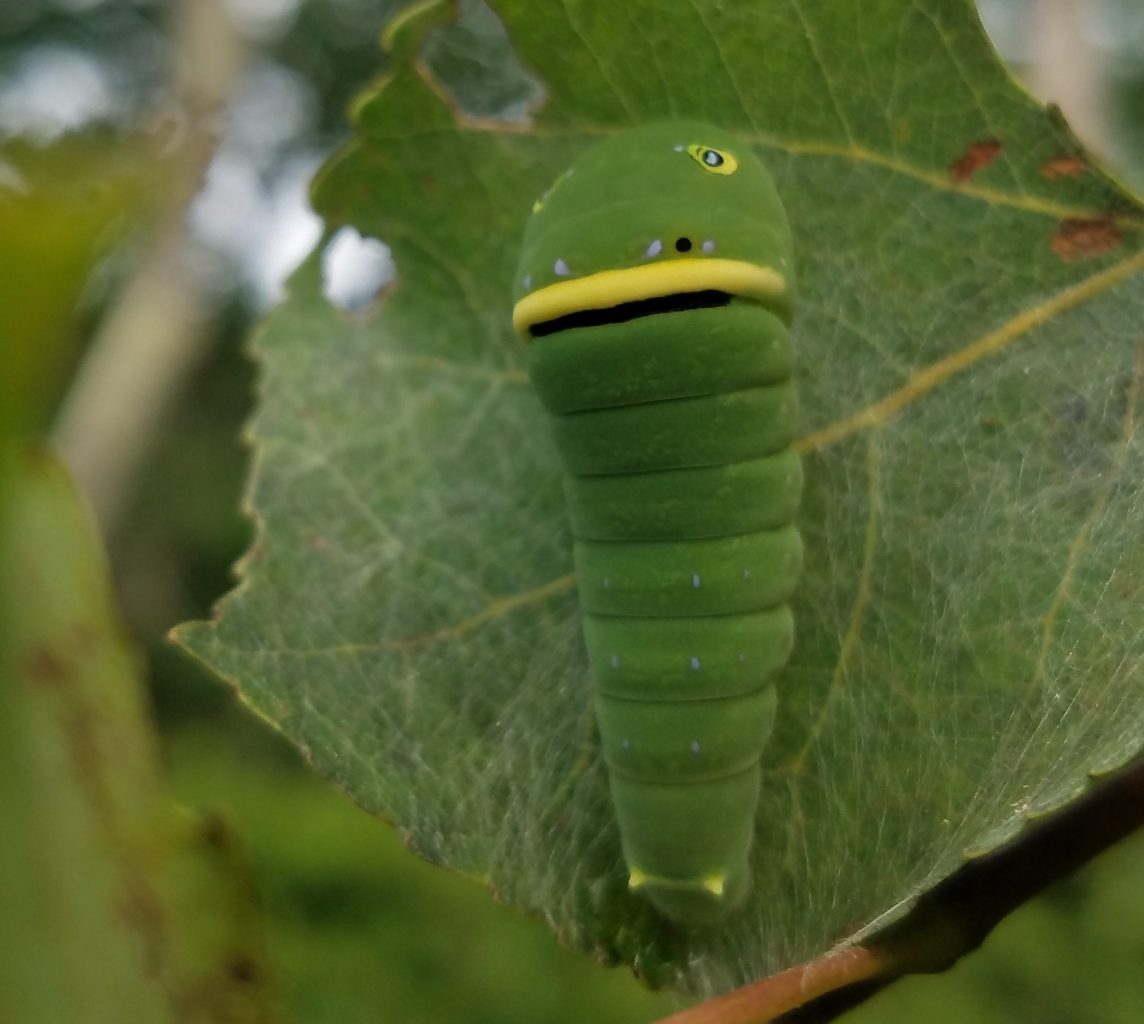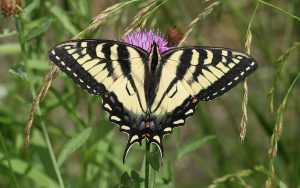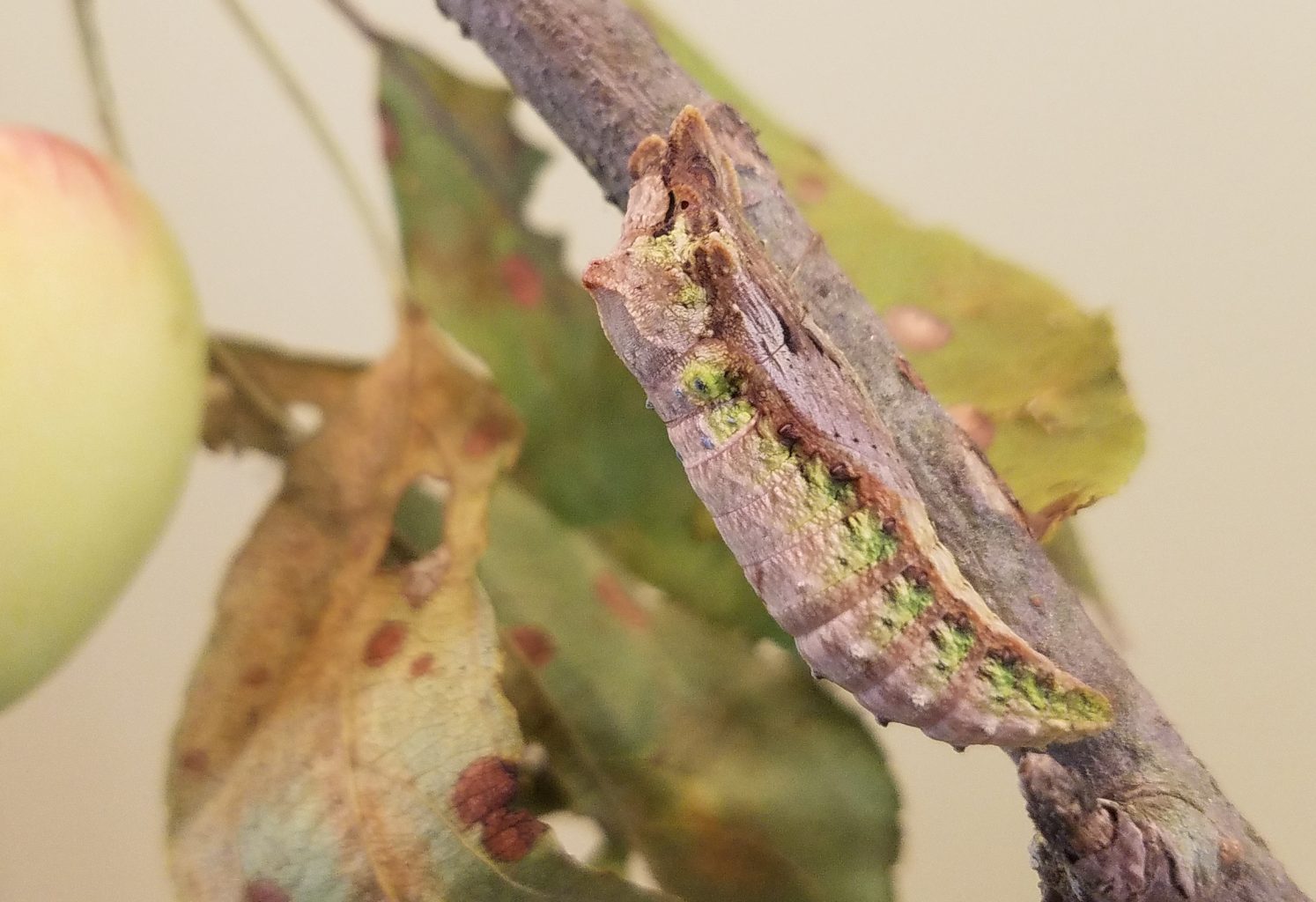Caterpillars abound at NBNC


Tiger Swallowtail caterpillar
Tiger Swallowtail Butterfly caterpillars are all over the nature center trails this week! With two beady eye spots, these thumb-sized caterpillars avoid depredation by mimicking the head of a snake.
Here in Vermont we have two species of Tiger Swallowtails, the Eastern Tiger Swallowtail, and the Canadian Tiger Swallowtail. Telling the adults apart by sight can be quite tricky, but flight period helps: Canadians fly once in the spring and early summer, while Easterns fly twice-- one generation emerges in the spring, and another generation takes wing late summer. While that helps for IDing the adults, the mature caterpillars are virtually indistinguishable from one another.

Adult Canadian Tiger Swallowtail (Photo by Mdf - Wikimedia Commons)
About 24 hours before pupating, these caterpillars turn from lime green to chocolate brown. The caterpillar below decided that it would begin pupating right on the welcome mat of the Nature Center. We brought it inside on a twig from its host plant (an apple tree), and the next day we arrived to find our caterpillar morphed into its chrysalis.

Tiger Swallowtail before putation

Tiger Swallowtail Chrysalis
Unlike monarchs, which emerge (or eclose) from their chrysalises in just under two weeks, these late-season swallowtail caterpillars will be entombed until spring. If you find yourself with a Tiger Swallowtail pupa this summer, keep it outside in a shady place through the winter. The moisture, temperature regime, and daylight length afforded outside are critical components of the swallowtails' maturation through the winter and its emergence come spring.
Check back with us in mid-May for the conclusion to our Swallowtail Saga, and we'll finally find out whether this is an Eastern Tiger Swallowtail or a Canadian Tiger Swallowtail.
Meanwhile, check out this timelapse video of a pair of pupating Monarch Caterpillars that we captured on camera at NBNC on August 9th!

